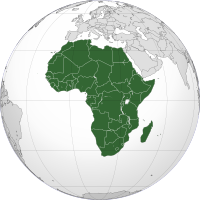
Photo from wikipedia
This study identifies risk and protective factors for falls among older, community-dwelling African Americans. Drawing upon the biopsychosocial perspective, we conducted a series of sex- and age-adjusted multinomial logistic regression… Click to show full abstract
This study identifies risk and protective factors for falls among older, community-dwelling African Americans. Drawing upon the biopsychosocial perspective, we conducted a series of sex- and age-adjusted multinomial logistic regression analyses to identify the correlates of fall events among older African Americans. Our sample consisted of 1,442 community-dwelling African Americans aged 65 and older, participating in the 2010–2012 rounds of the Health and Retirement Study. Biophysical characteristics associated with greater relative risk of experiencing single and/or multiple falls included greater functional limitations, poorer self-rated health, poorer self-rated vision, chronic illnesses (high blood pressure, diabetes, cancer, lung disease, heart problems, stroke, and arthritis), greater chronic illness comorbidity, older age, and female sex. Physical activity was negatively associated with recurrent falls. Among the examined psychosocial characteristics, greater depressive symptoms were associated with greater relative risk of experiencing single and multiple fall events. Implications for clinicians and future studies are discussed.
Journal Title: Research on Aging
Year Published: 2017
Link to full text (if available)
Share on Social Media: Sign Up to like & get
recommendations!